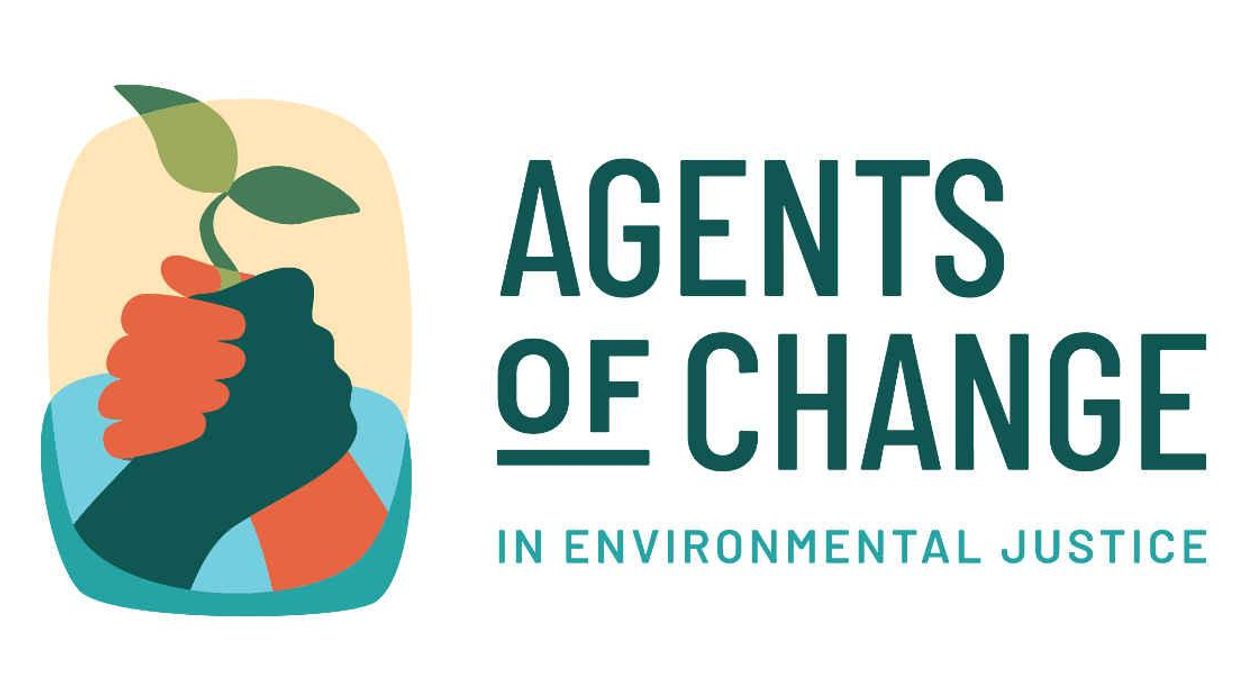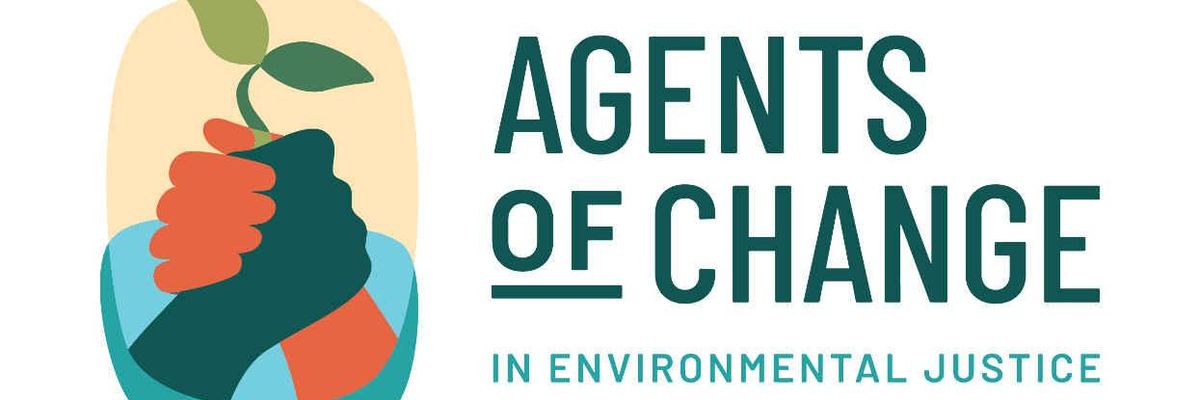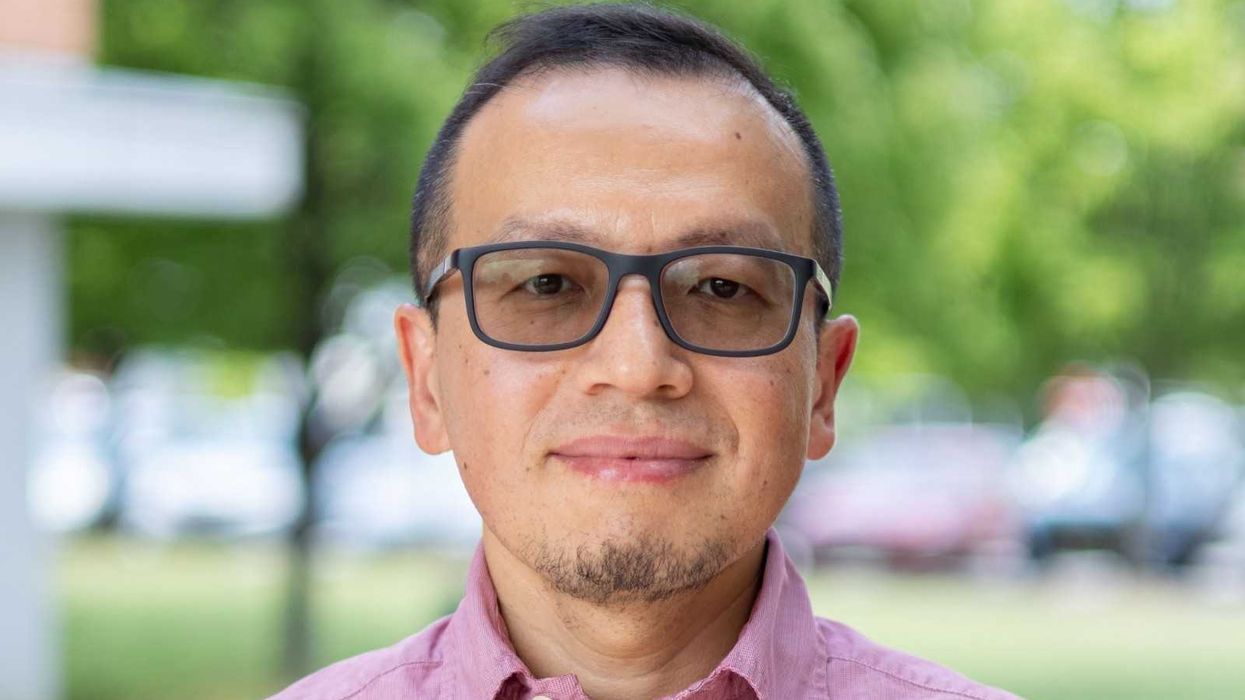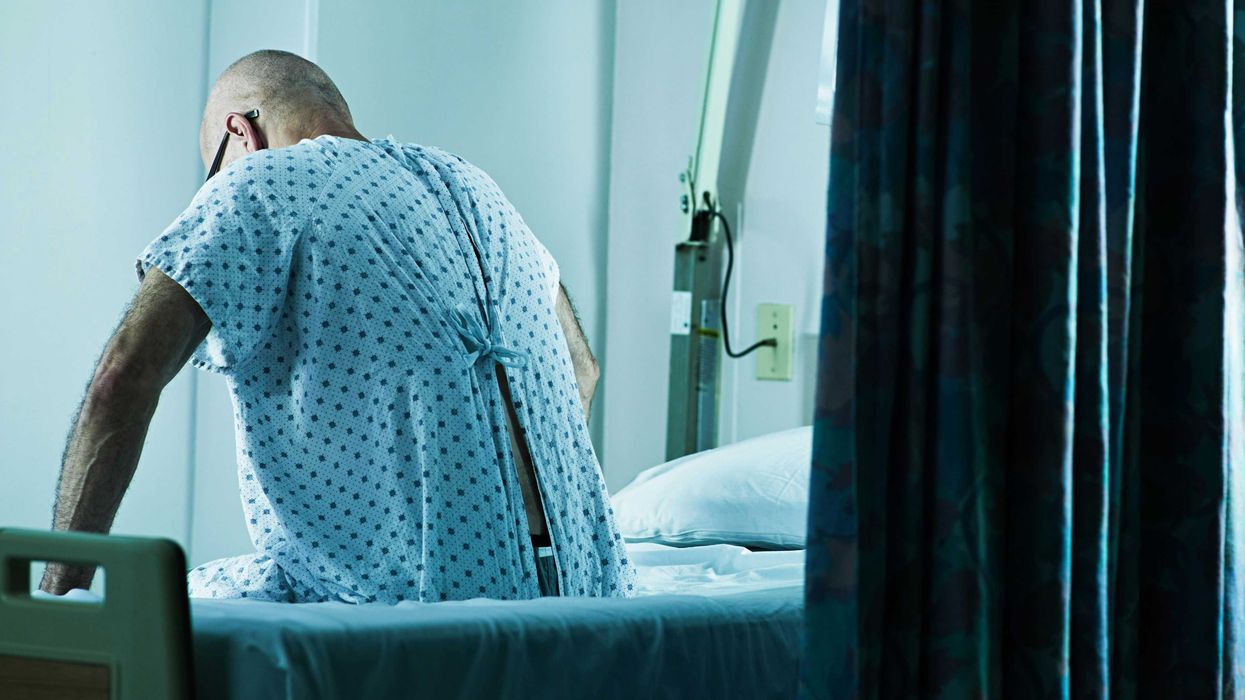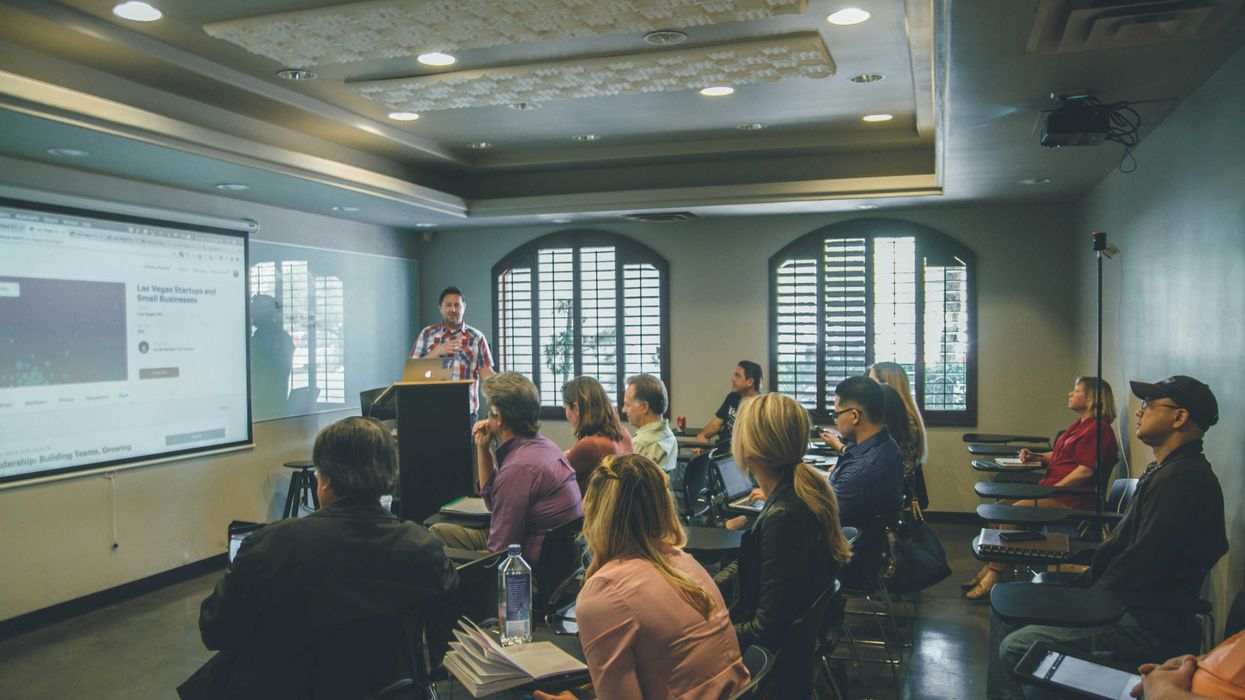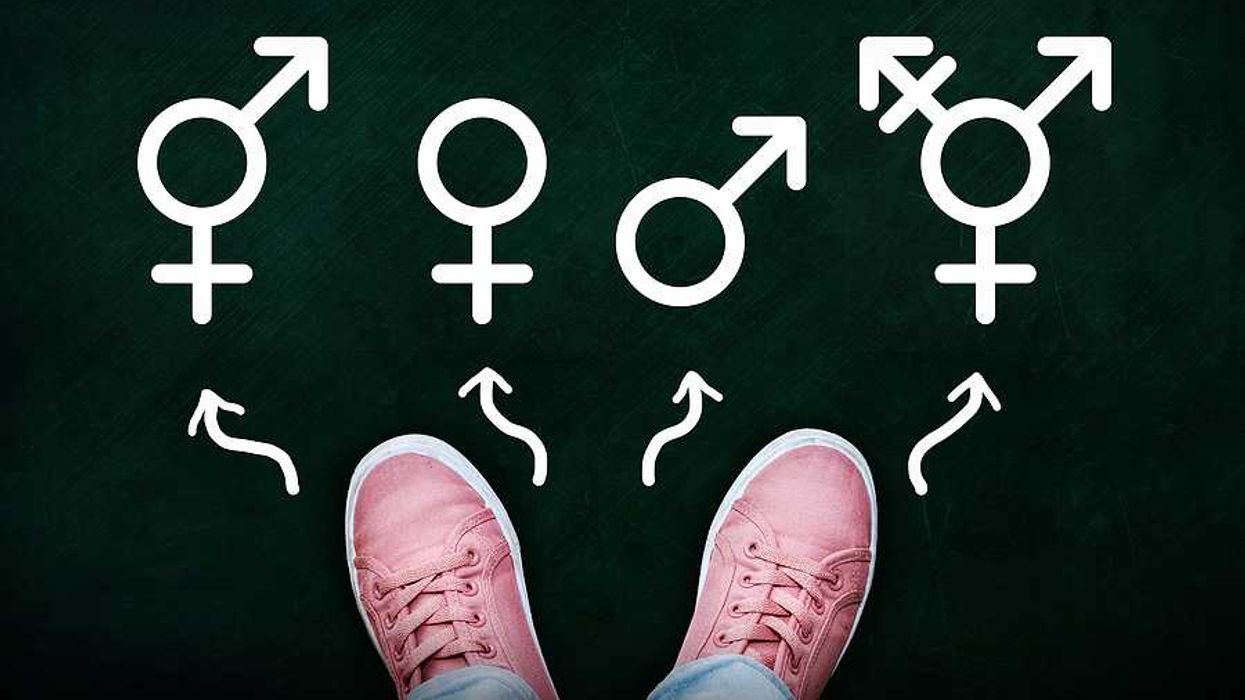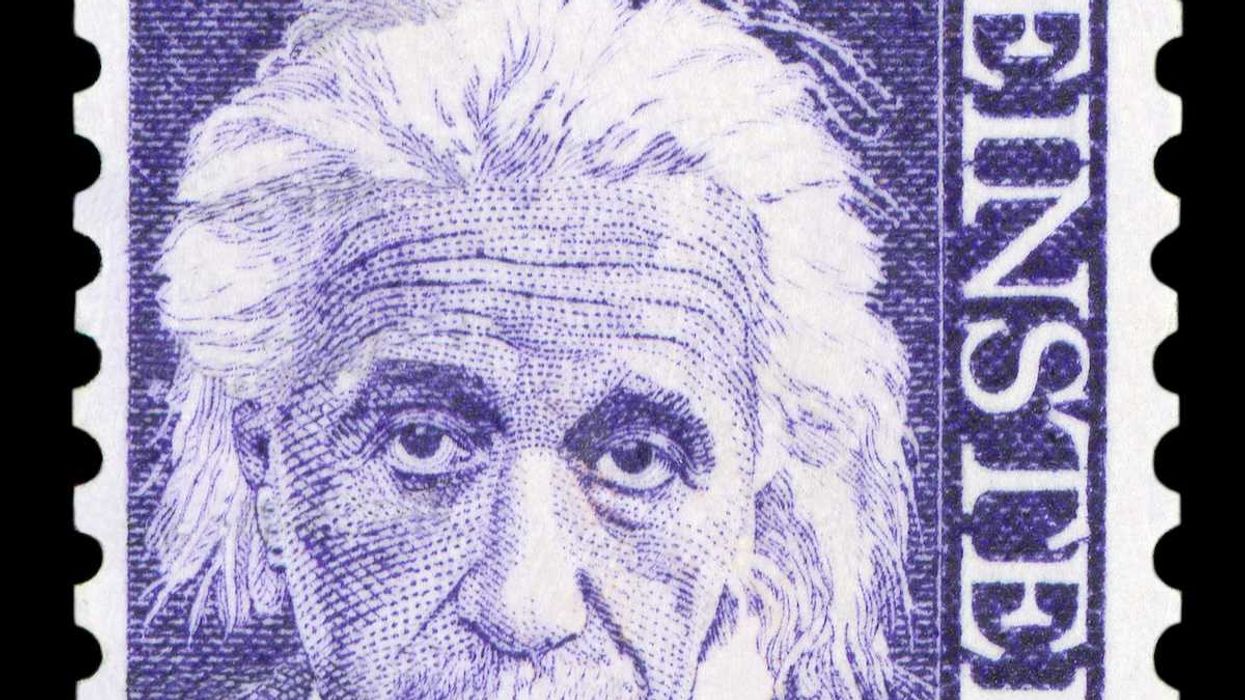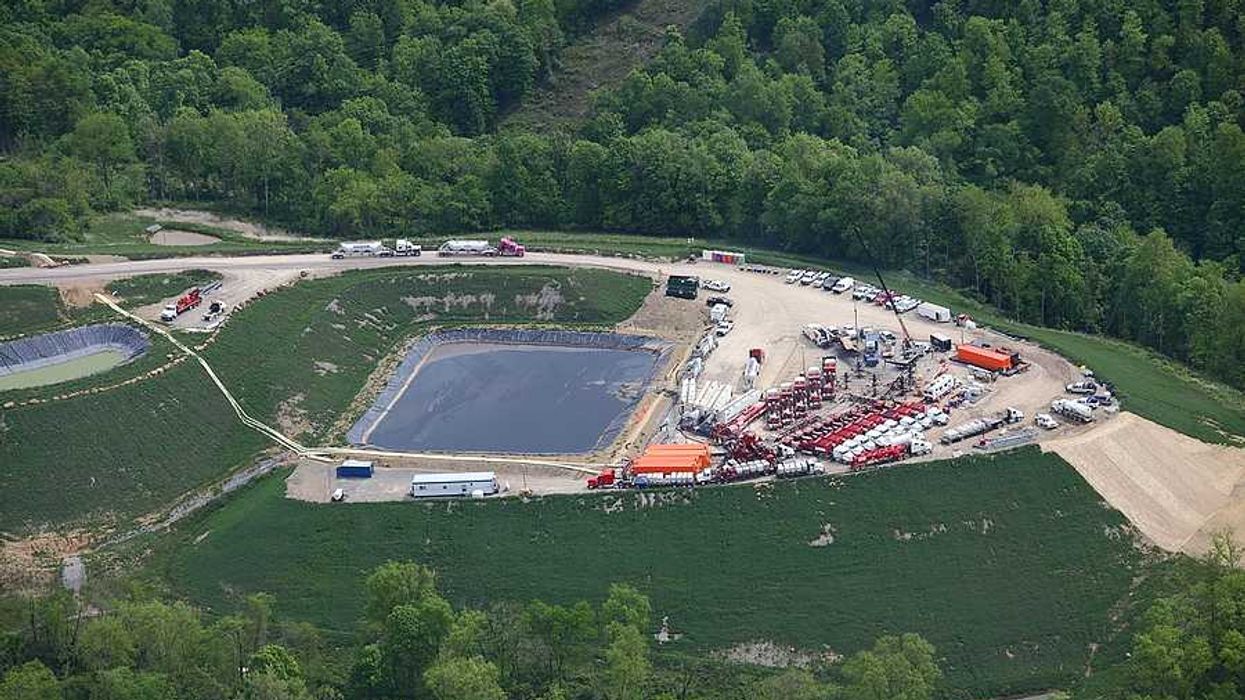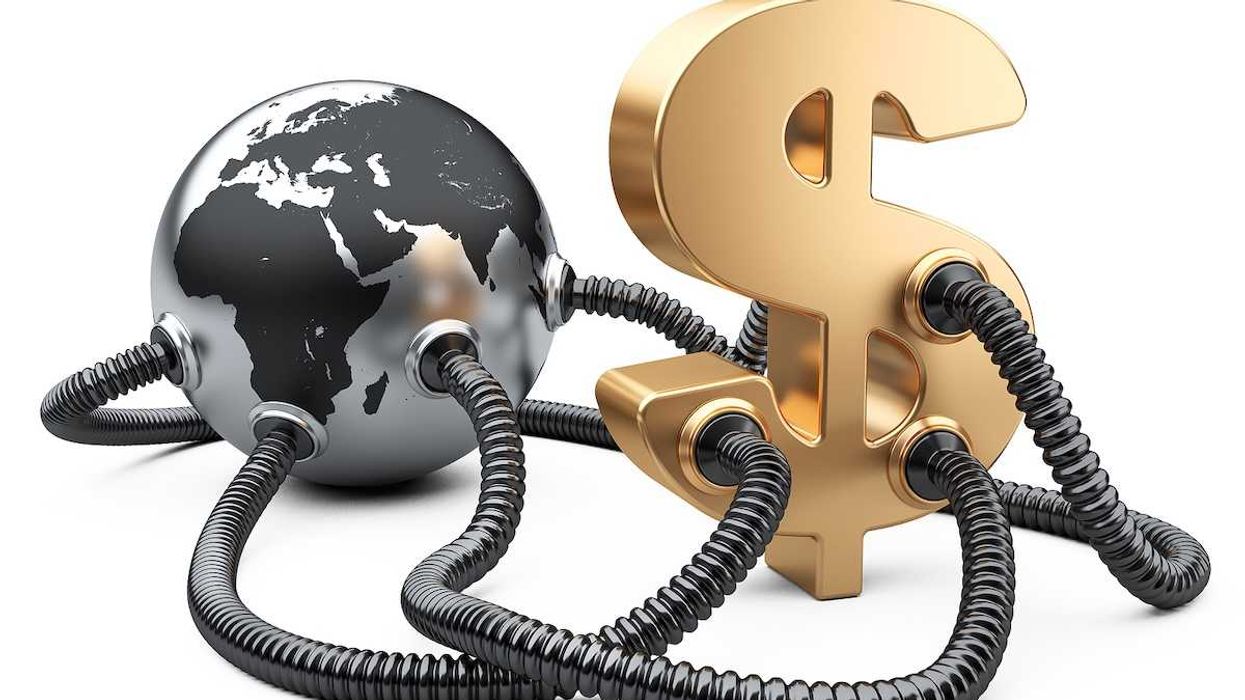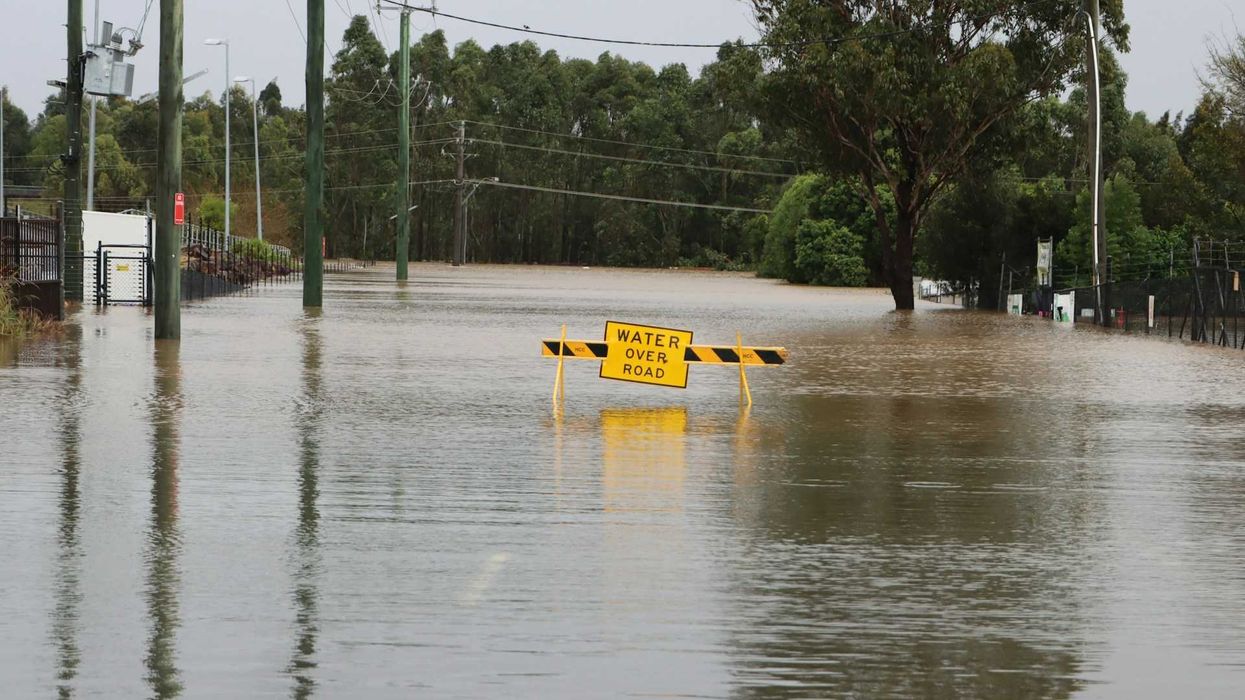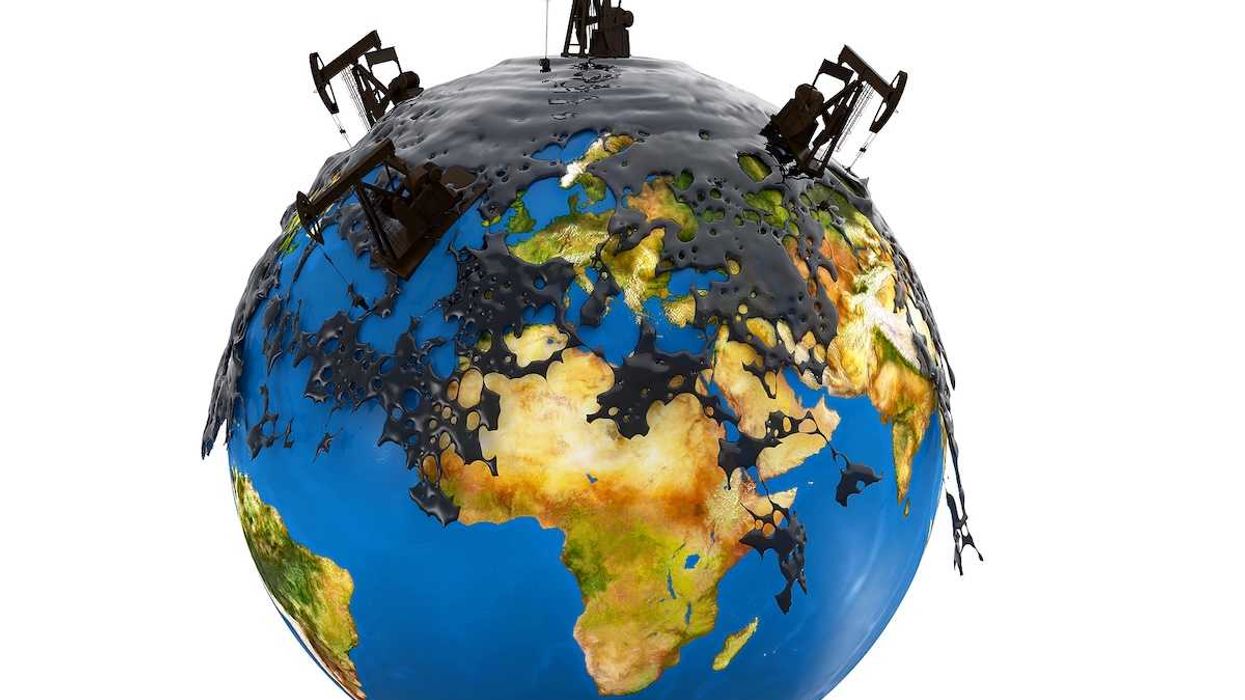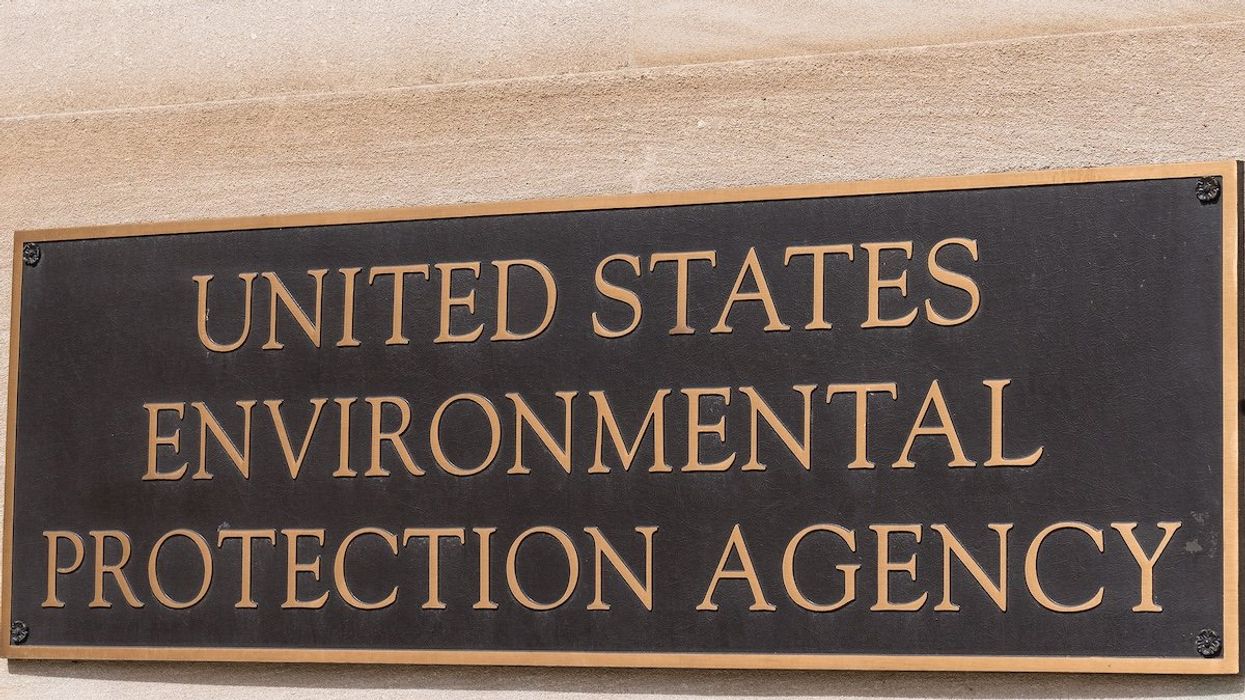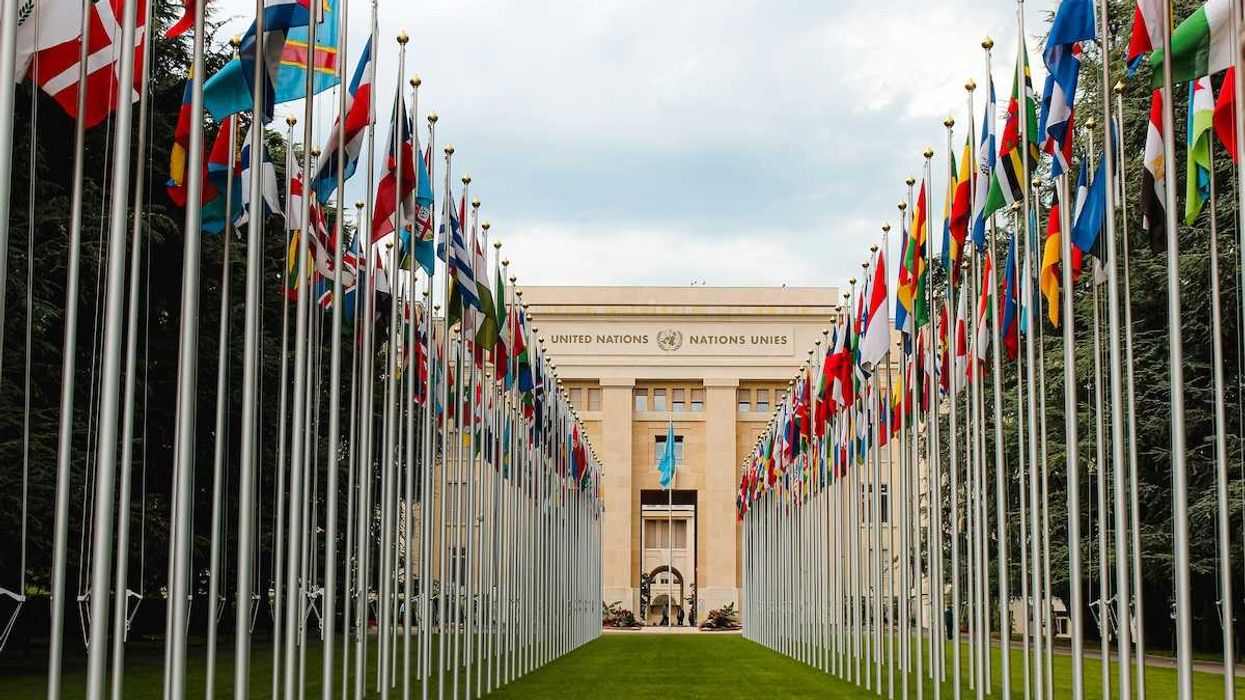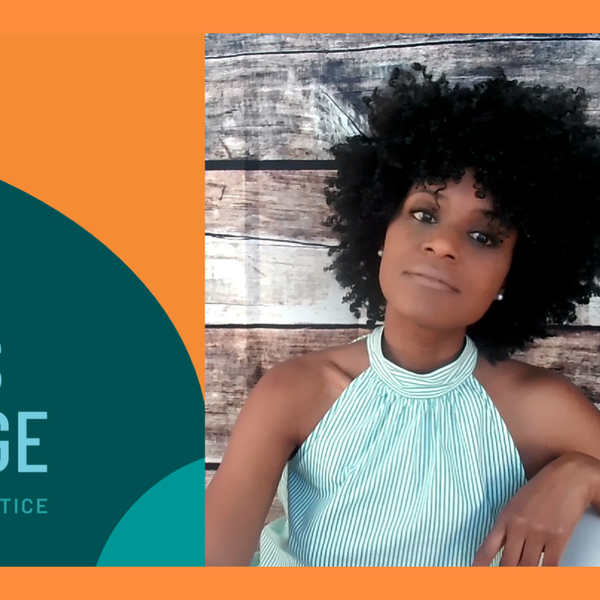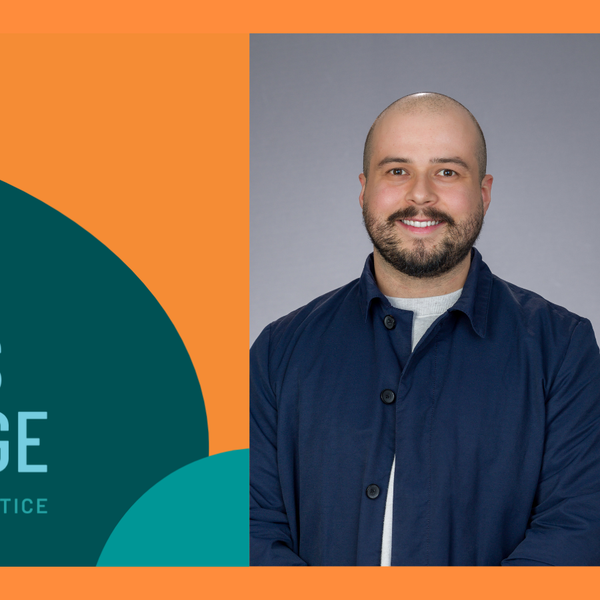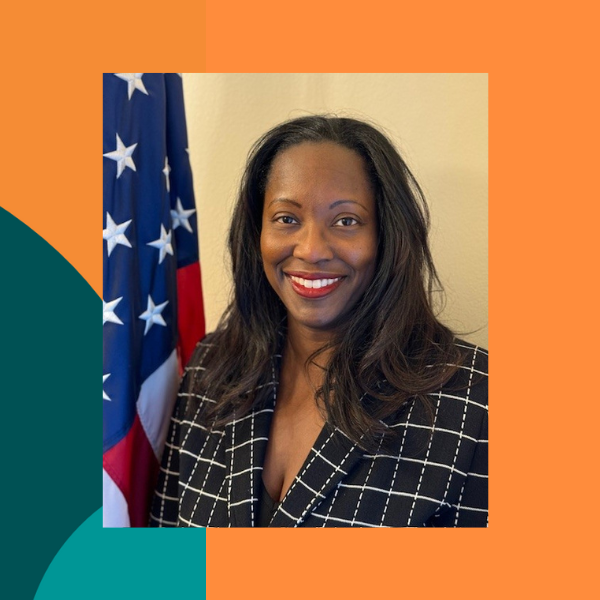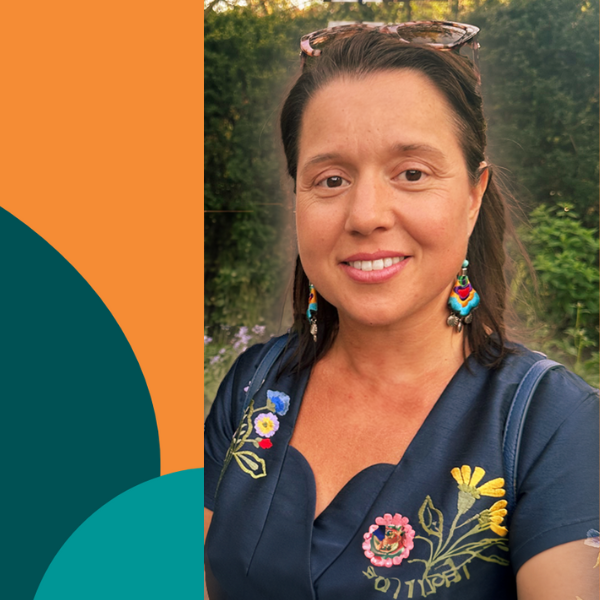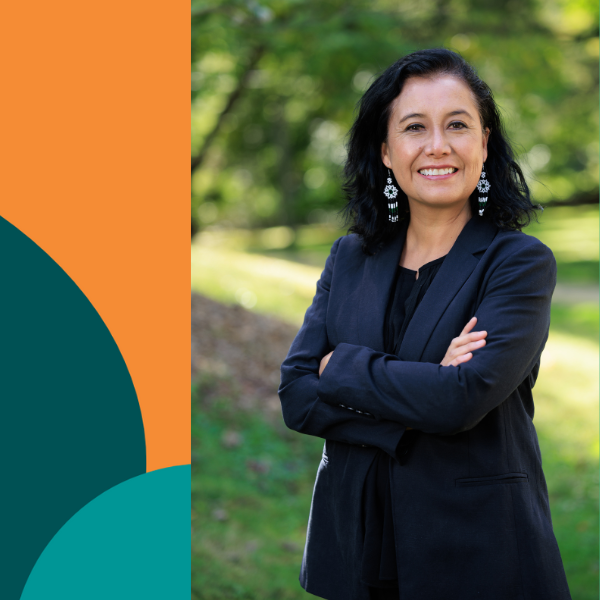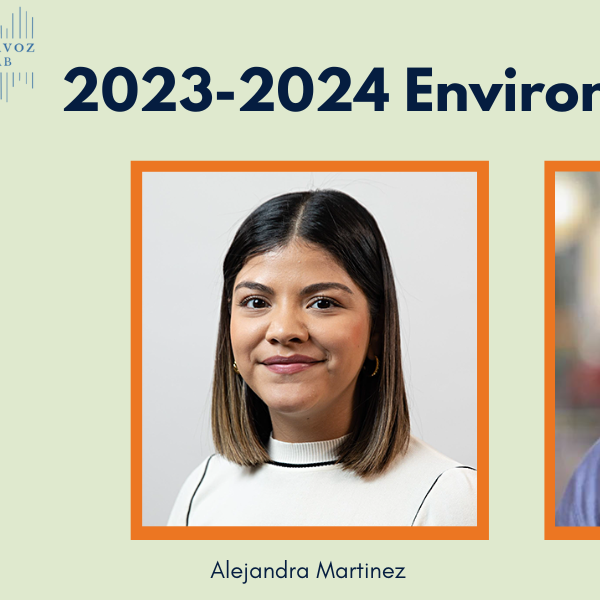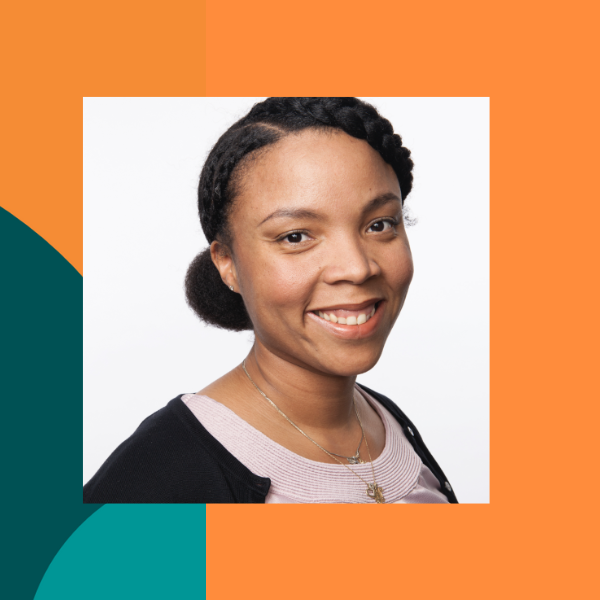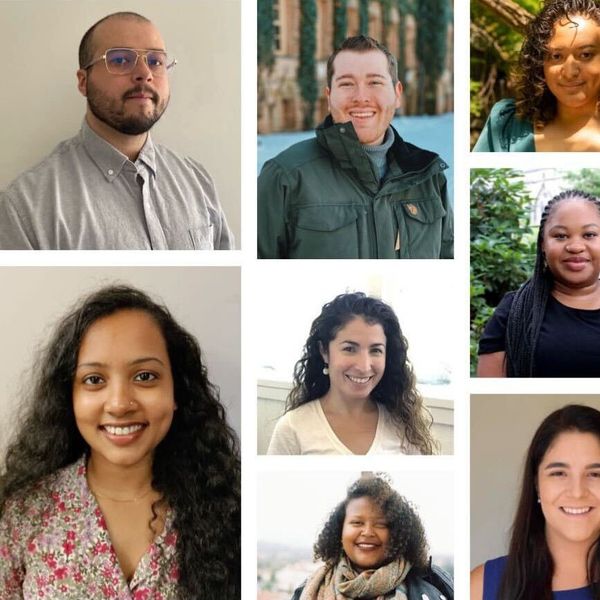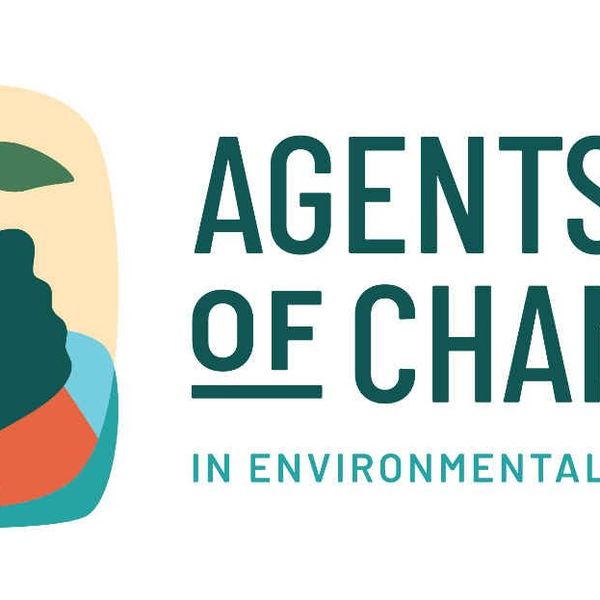JoRee LaFrance joins the Agents of Change in Environmental Justice podcast to discuss her deep roots in the Crow Tribe of Montana — and how she’s pairing research and advocacy to better her community.
LaFrance, a current fellow and doctoral student in the Department of Environmental Science at the University of Arizona, also talks about her connection to the Little Bighorn River, having family help with her research projects and her work and outreach with young Indigenous women and girls.
The Agents of Change in Environmental Justice podcast is a biweekly podcast featuring the stories and big ideas from past and present fellows, as well as others in the field. You can see all of the past episodes here.
Listen below to our discussion with LaFrance, and subscribe to the podcast at iTunes, Spotify, or Stitcher.
Transcript
Brian Bienkowski
All right, I am now joined by JoRee LaFrance. JoRee, how are you doing today?
JoRee LaFrance
I'm doing well. I'm doing well. How about yourself?
Brian Bienkowski
I'm doing great. And I usually do this before we get going. But I pronounced your name right, correct?
JoRee LaFrance
Yes, you did.
JoRee LaFrance
Good. Yours is not difficult, but I always like I always like to check. Well, thank you so much for joining us today and where are you joining us from?
JoRee LaFrance
I am joining from Tucson, Arizona. So I have the sun out today. Although it's been cold we have some snow in our mountains, but nothing compared to the snow back in Montana.
Brian Bienkowski
So JoRee, you are from the Crow tribe in Montana, a place I've had the good fortune to visit. Why don't you tell me a little bit about where you're from and how it shaped you?
JoRee LaFrance
Yeah, for sure. Well, I just wanted to do a small introduction. Baalaashe Iichiinmaatchileesh huuk. Bishbaale dúhpaapilake axpisahpuak. Basammalíaxxia biiuuwuutasshiik deelé koon biixúhkaalaxchebaakaatik. So my name is Iichiinmaatchileesh which means Fortunate with Horses and my name was given to me by Sue takes horse. I come from the Greasy Mouth clan, and I'm a child of the Ties in the Bundle clan. And I'm 27 years old and come from the Apsáalooke Nation in southeastern Montana. I was born and raised on the reservation there. And I'm very, very fortunate to come from the Bighorn mountain, the Bighorn Mountains, I like to call it my outside heart, the center of my universe. I've been all over the world and my heart always longs for home. And I just love the landscape that we come from. And you know how deeply rooted it is to my people. The reason why we are in the Bighorn Mountains is because of, of the tobacco seed. The tobacco seed is what brought us to the Bighorns, and it grew there, my people, we traveled all over. And we were on a mission, on a quest to fulfill a vision by one of our warriors. And finally, that tobacco seed it grew in the Bighorn Mountains, and that's where my people were told they were going to thrive and that was their, their holy place.
Brian Bienkowski
And I can say having been out there it is just a it is a beautiful, beautiful place. I wrote about Chief Plenty Coups spring when I was out there. And I think we discussed this I got to visit many of the places you spoke about. I wonder if you could talk about so you gave us a really nice backdrop there. How is this history and lineage taught to you growing up? How is this kind of embedded in your childhood and when you were younger, did you have an appreciation for it like you do now?
JoRee LaFrance
Growing up, It was just an inherent thing. My mother did a very good job of letting me know who my relatives are, letting me know about my family tree who I'm a descendant of. I come from really good families and I don't just say that just you know, because they're my family like I seriously do come from good families. I've been told many times, you know, even the last trip I had home, they talked about my family and how I come from a good family. I know I'm a Whiteclay, I'm a Tobacco, I'm a Horn, a Bear claw, a Know His Gun, a Harris, and a LaFrance. I'm primarily, I was raised Apsáalooke. And my mom, she's a fluent speaker. And I grew up you know around all of my family on the reservation were so tight-knit, and everyone lives there. So I just grew up with, you know, my whole family, my whole extended family around me and I come from educators, I come from leaders, role players, you know, people who are out there, making a change, you know, lawyers I come from, you know, one of my family members as a medical doctor, she's the first Apsáalooke women medical doctor, she speaks fluent Crow, she's a pediatrician. So, you know, I just come from good people. And I take pride in that and to, to know that I come from that lineage, you know, it's just, it's...they're big shoes to fill. But I am appreciative of that, and I am a descendant of Chief Pretty Eagle. He was the last principal chief. So he along with Chief Plenty Coups, who you mentioned before, Chief Plenty Coups is definitely younger than Chief Pretty Eagle, but they were pivotal leaders during that time, during the transition into the reservation era, when we were forced on reservations. And we couldn't leave, we had restrictions, our land was taken away from us, it was just a huge transition for us, and Pretty Eagle and Plenty Coups, who along with a few other chiefs who obtain chieftainship, through, you know, our, our traditional way of receiving that we have four deeds that they have to do, and Chief Pretty Eagle, he was the last principal chief, and he actually was... so to be a principal chief means that every band in our tribe, you know, basically wanted him to be the leader. So we had different bands, and we, you know, separate function in our own little societies. But we'd all come together to celebrate, to eat, to dance, to pray, to just be with each other. And Pretty Eagle was chosen as that principal chief, and he was the last one before we were put onto reservations. And I just, you know, to come from that legacy, as well, I can name right now, my lineage all the way back to him. And so it's just, you know, like I said, I come from leaders and people that have an Apsáalooke mindset, and we give back and it's just something that it's inherent in me, and I just, I have to do it. And I love doing it. That's the other thing is I love being a part of, you know, my people, I love being a part of my families, and I love being able to give back in ways that I never thought I would have had had the opportunity to.
Brian Bienkowski
And you are giving back both professionally and personally. And I want to get into that. But before we do I want to ask you the big unwieldy question I asked everybody and that's what's a defining moment that shaped your identity up to this point.
JoRee LaFrance
I was raised around horses you know, my Apsáalooke name is Fortunate with horses, Iichiinmaatchileesh. And so I grew up with horses my entire life. And I guess the moment for me was when I actually realized the magnitude and significance of the Crow Fair parade. So, annually, every third weekend in August, my people we come together. To celebrate we have a powwow, rodeo, parade every morning and this parade is nothing like you've ever seen before. We have horses, excuse me. Our horses have beadwork all over them. We have our elktooth dresses, we have, you know, cars decorated with dresses, and it's just something like you've never seen before. And for me, I've always done that, even when I was a little girl before I could even walk I was already on my horse riding. And as I got older and I did that every year, it just made me so appreciative to come from that, there's nothing like that in the world. And that's who we are as Apsáalooke people and our beadwork is so distinctive and unique. You can tell Crow beadwork from, you know, any other beadwork. And for me, especially my family, we have two parade sets. So when I say parade sets, it's you know, an old time saddle, a martingale that goes in front of the horse, the headstall we have a keyhole that goes in front, cruppers, let's see lance case, wedding blanket, like there's so many pieces to it, cradle boards. And for us, for my family, we have two sets that were made in the 1800s. And I'm the sixth generation to use them. And we're one of the only, well actually, we are one of the only few where almost the whole parade set is old. But you have families that have just pieces that are old, and then people that have these older dresses, and my family we have almost everything. And that's significant because museums and collectors, they took our things, they, you know, I look at old photos and you just see all of these women and girls, even men dressed up in their horses have everything they, you know, traveled with, so many elk tooth dresses, and now I'm it just breaks my heart, like, I'm one of the few families that actually still has one of these old dresses.
Brian Bienkowski
But you've also been able to kind of merge this passion, of course, with your professional work, which I think is so cool. And you're researching water and soil science with a focus on the Little Bighorn River, which you mentioned. So can you tell me about the river, its importance and what kinds of contamination patterns as it has, because I know that's kind of what you're looking into,
JoRee LaFrance
you know, I don't have a first memory of the Little Bighorn river just because it's all I've ever known. You know, it's always been a part of my life. I was raised, you know, I can go outside. And if you just close your eyes, and imagine all of the sounds around you, you can hear the river. That's how close I live to the river. And, you know, like I mentioned before, my people have been around this area on this land for many generations, and the Little Bighorn River for, for me, it's, I feel like it's our full responsibility to take care of this river. It begins in the Bighorn Mountains, flows about 11 miles north hits the border, the Montana-Wyoming border, and immediately as soon as it crosses the border, it's on our reservation, then it only flows north on our reservation and hits the Bighorn River, just at the northern end of our reservation. And, you know, at that point, the river is completely in our jurisdiction, it's fully in our responsibility. And so that, to me is just like I had to study this river. And I worked with the Crow Environmental Health Steering Committee, who you also worked with, and that's who you came to visit and talk about water quality issues. So they've been so instrumental in my Ph.D. journey, for sure. And my research journey, and their work is focused on environmental health and community risk, specifically in private wells. So groundwater, we do sample surface waters, like the Bighorn River, Aluutaashe/Arrow creek or Pryor Creek, and then the springs, so like Plenty Coup springs, but not a lot of work was being done on the Little Bighorn river itself extensively. And, you know, we had different conversations about our water settlement and using the Little Bighorn River more. And so I really wanted to focus on surface water quality. And I just love watershed science in general. I just love the might of rivers. I'm just a river girl. And so for, for me, when I returned home after I graduated from Dartmouth College, I took a year off and work with the steering committee on water quality issues sampling, we did a climate change, a climate change study, working with elders, and I was applying to grad school and University of Arizona has always been on my mind in terms of water resources. And you know, it's crazy we're in the desert, there's not that much water, but it's a, you know, a top program for water resources. And so I was really drawn to that. And, you know, I, everything, the stars aligned, I'm here now at the University of Arizona and the Department of Environmental Science. My specific research is trying to understand the concentration discharge relationship of the Little Bighorn River. Essentially, I want to know how pollutants are behaving as a function of seasonal river flows. So throughout the year, we know that a river will change its discharge or its flow across its specific area. And we know that it changes throughout the seasons. For example, in December, we're at baseflow. It's at its lowest, at its calmest and then we start to get snowmelt, and rain showers causing the rivers to fill up more and more. And by June we have high peak and our high peak discharge where the river is at its highest at its strongest and it is roaring and I want to know how these pollutants are functioning throughout these changes. And I do this by bringing together high frequency water sampling and placing multi-parameter sensors, EXO2 Sonde sensors in the Little Bighorn river. So I have one sensor towards the beginning of the river at the Montana-Wyoming State Line trying to gain a better understanding of what's happening more in the mountainous area and the Bighorn Mountains before it hits our reservation. And then the second location is in a place we call Ashshipíte, which is Black Lodge. And that's towards the end of the river towards the confluence, where the Little Bighorn river meets the Bighorn river. And this sensor is really trying to collect information of what's happening throughout the entire watershed. We do have agricultural development, we have towns that are along this river, just a lot of anthropogenic influences. And I wanted to gain a better understanding of what that looks like for us. And the samples are collected weekly, either by myself when I am home, and then I have field help. This whole Ph.D. has been such a family affair. I'm very grateful for my family who, you know, sample for me when I need it, and check on my sensors. And I also have field help, two Apsáalooke students who have had such an integral role in my sampling, my field help actually went out earlier today. So we're trying to make sure everything was all good to go for him to go out. So super grateful for all of the help and the support that I have, I would not be where I am without all of that help. So the pollutants that I'm looking for, are mainly related to what is happening at home. So I'm looking at toxic metals, pesticides, herbicides, fertilizers, we are also looking at wastewater treatment byproducts, and then PFAS, PFAS is Per- and Polyfluoroalkyl substances. And those are manmade compounds. And they can be really, really complex. My lab, the Arizona Laboratory for Emerging Contaminants, really is at the forefront of developing methods to PFAS, which is, you know, incredible work that they're doing. And I'm very, very fortunate to be a part of the lab group that I am a part of. So, many role players in the work that I do. And it's just been a roller coaster so far, but very grateful for this Ph.D. journey and cannot wait to be done and cannot wait to move home to continue the heartwork.
Brian Bienkowski
Yeah, I like the idea of calling family like hey, "get down to the river, I need my samples," that's easier than dealing with like an intern or something like that. So when you have, It sounds like you're trying to do your research kind of paint a picture of the cycle, the lifecycle of the river throughout the year and different contamination modes. What do you what do you hope that knowledge does, you know, if you if you were able to say paint that picture, what would be the next step in what you would want that knowledge use for?
JoRee LaFrance
Yeah, for sure. So ultimately, my goal is to, you know, create a foundation of data and understanding of the Little Bighorn River. The Bighorn River, is a world-class fishing River, it's a world-renowned river, many people study that river, it's located on my reservation, we have Yellowtail dam with the reservoir there. So that river is very well-studied. And for the Little Bighorn River, I just wanted to you know, provide a foundation. And I really, in the end, hoping that, you know, bringing all of this data, all of this information together about our resources, even our groundwater resources, is to obtain treatment-as-state. And what essentially that means that under the Clean Water Act, a tribe can set their own water quality standards that are more stringent than state and federal EPA standards. So a tribe can you know, for example, let's say arsenic is 10 micrograms per liter, you know, that's the maximum contaminant level and a tribe, for example, wants their level to be seven micrograms per liter, or so they would, you don't have to it's a it's a much deeper process than what I'm mentioning now. But I'm just giving a general idea of what you know treatment-as-state status means. And, you know, a tribe can do that and every stakeholder, every person, whether you're non-native or non-native living on along this river, as long as you are upstream of that tribe, you have to abide by those standards. So you can be off the reservation, and you still have to abide by those standards. So it's a long process, but definitely something in the end that I would like for my tribe, that way we can monitor our waters, you know, restore the health of those, those water systems that might be impaired or address the issues that are our rural community members face as far as their private wells like we can monitor these things and actually take a hold on, on, you know, addressing these water contamination issues at a at a policy at a tribal sovereignty level. And that's, that's my hope. That's my ultimate goal. Hopefully, I can see the light at the end of the tunnel, it’s a lot of work. But I know that it's going to take a team and I have a good team at home. And I'm very excited to, to return home and to get to work.
Brian Bienkowski
Yeah, for sure. And I remember being there. And you mentioned a world-class fishery. First of all, it was a little jarring to see some of the high-end fishing guides, I just thought it's it, it felt out of place for some reason. But I did find myself standing on the shores, the banks of the Big Horn and thinking, "I wish I had my fly rod with me" more than once, but unfortunately, when you're working, you can't do those kinds of things. So I don't know JoRee, if traditional ecological knowledge is still the preferred term. I know at one point that was kind of tech, that's what everybody said, when they would refer to this. I don't know if that's a term, but basically, how are you incorporating the tribe, in your research, when it comes to kind of the deep historical knowledge of the river and the broader landscape?
JoRee LaFrance
Everything is inherent, I think, you know, you can hear how much this river means to me and my people. And so for us, so we have a story that I feel like really kind of centered, all of the work that I do. And it's about, Iisaxpúatahchee sahpua, the seven sacred rams, they're the keepers of the Bighorn Mountains, and we have the Bighorn River and the Little Bighorn River, these, these rivers and our mountains, they're named after them. They're the keepers of them, we have a story of the seven sacred rams saving a young boy who turned into an incredible warrior and brought teachings back to our people. And one of them, one of those teachings was to always keep the mountains and the rivers the same name. And as long as they remain named after the seven sacred rams, that we will remain as Apsáalooke people. And that story is just, it just, it makes me you take that responsibility of not just keeping the names, of course, but you know, that responsibility to these, to the river, to the land, to the mountains. And, you know, I know, I have a responsibility as an Apsáalooke woman to care for our lands, you know, it's just, it's just a natural thing that we do. And I, I wanted to bring that stewardship, that responsibility into my research, I probably would have not done a Ph.D., if I wasn't able to center it at home, or use the knowledge or, you know, the community-based aspect of the work that I do, I am very hard-pressed on that. And so for, for this story to bring me to where I am, I just like it just, it just like warms my heart, or I don't know, I just feel so lucky to be able to do, to do this work the way that I do. And, you know, we have teachings for the river. So like I said, like we're sampling all year round, we have, when in the spring when the cotton first falls, that's when we feed the river and we can finally swim in the river. And so technically, we're not supposed to be in the river and I'm sampling the river. So I'm in the river all year round. And I do clan feeds, I feed my clan mother, we have a clan system that we heavily rely on. And I do these things. You know, as I do my research, I feed the river every time I go into the water or, you know, download data from my sensors, I'm doing these things and feeding the river means, you know, praying and showing respect for our buluksée, the water creatures, those beings that are in the water and just asking for protection, showing our respect, letting them know we're not there to disrespect or to you know, destruct or whatever. It's just, you know, it's that mutual respect. And a lot of times I'm in remote areas. And so I don't like to go alone, I'll usually take you know my sister with me or, you know, one of my friends or my dad, but there's been a moment where I did have to go alone and it's remote. And we have mountain lions, we have bears. We have everything out there and you know I always just have to like let everyone know that I'm there and that I'm here to do I mean, well, I'm just trying to collect some water samples. And so it's just these small things that I feel like were inherently a part of everything that I'm doing. And I try to make sure that I show full respect because I do mean well, I'm just trying to fulfill my responsibility, and do, do good. And to restore, restore the health of our waters. And for not only the water beings, but for our people as well. And I think that's, that's why or that's where my, my entire motivation comes from. And it's it is rooted in, in those stories in that responsibility.
Brian Bienkowski
And having been there, there are some remote places. I mean, that is a massive reservation.
JoRee LaFrance
Yeah, we actually have the largest reservation in Montana, and the fifth largest in the US. So it's a lot of ground. And some areas don't have cell service, like my first location near the border, there's no service. So it's pretty remote. But, you know, I just always check-in with people may I'll be back in an hour, if I don't message in an hour. Something's wrong. There's, you know, mutual respect everything all the way around.
Brian Bienkowski
Is it 2 million acres? Do I remember that right is okay. Yes, 2.2 million acres. That is? That's a massive part of that. I mean, that is massive.
JoRee LaFrance
Yeah it’s bigger than Rhode Island.
Brian Bienkowski
Right, right. I mean, not not what it should be, obviously, but it is. Oh, yeah.
JoRee LaFrance
Right. Yeah, our reservation used to extend all the way down to the Wind River Mountains, as far east towards the Black Hills as far west past, you know, Livingston towards the Bozeman area as far north as the Milk River, like, and over time, it just shrunk and shrunk. And I have a map of our original boundaries. And, you know, our territories as before reservations, what we how we explain those boundaries, we have a warrior, he talks about the four base poles to explain, you know, where, where we lived. And then, of course, when the federal government treaties were signed, land was forcibly taken. And so that map is just over time smaller, smaller, smaller, smaller, and it's crazy to, you know, I, when I was home, two weekends ago, I went to Gardiner, Montana, to, you know, go soak in the hot springs and take a day for myself. And it's about a three-hour drive from our reservation. And that was, that's all Crow country. And that's that the gateway to Yellowstone. And it's just, I get a little upset every time I go, but, you know, we're, we're very fortunate to still to have our reservation be on our traditional homelands, because not a lot of communities, not a lot of tribes are fortunate to be on their original homelands. They were placed on a reservation completely far from where their heart is. And that that's another thing why I'm so grateful to come from where I come from. And so that's just a another aspect to why I appreciate being Apsáalooke.
Brian Bienkowski
So you've also gotten a chance to work in the community, not dealing directly with your Ph.D. I know you work whenever possible with the young women and girls from the Crow. So why is it so important to you and what are some of the community projects you've worked on in the space?
JoRee LaFrance
As Apsáalooke people we come from a matrilineal society. Everything comes from our mother, our clans. I mentioned before that I'm Greasy Mouth. So my mother's Greasy Mouth, her mother's Greasy Mouth, and so on so forth. And you know, that being a matrilineal society is just everything is about the mother. Everything is about, you know, coming from the women in our family and I come from strong, amazing women. And I know that there are many strong women in my community. And I just, I love being around them, being surrounded, being empowered by them, and I just been so fortunate to be involved in community engaged projects, civic engagement projects. I've done a sewing, a creative circle workshop, where I brought in Bethany Yellowtail, who's a Northern Cheyenne fashion designer. She taught about 40 women how to sew and they each left with their own skirt. And other project I did was a healing workshop. And that workshop actually was in response to a case that occurred on our reservation back in January 2020. So the Missing and Murdered Indigenous Women and Girls epidemic is rampant across Indian country, specifically in Bighorn County has been kind of the hotspot for MMIW. And Big Horn county is where the Crow Reservation is located. So Selena Not Afraid she was, she was murdered. And still to this day, what three years later, no justice has been served. And in response to that, that when that happened to Selena, it just it hit our community so hard. And that was, Selena was the second within six months. Another girl was murdered in August Kaysera Stops Pretty Places. So we were just so heartbroken. Like our whole community. We were all heartbroken over it. And so the thing for me is, okay, there's so much rage so much hurt, how can I turn this into something positive? How can we do something to at least have a little bit of remediation or just a little bit of healing that broken heart. So the first thing I did was turn that that hurt and that rage into something positive. And we wanted to at least do something to bring a little bit of healing or spark that healing. And I partnered with the Native Wellness Institute out of Washington, and they're incredible. They do incredible healing work, Indigenous based healing work. And I brought them to our community. And we did two days of workshopping, and we had Selena's grandmother come. And that just meant the world to me. And it just, it just made that whole thing worth it when I saw her there. And she thanked us and she, we cried with her, and we, it just... it just made me feel so good to see that she was there with us and that she wanted to heal. And she wanted to do everything she could to get through this because it hit all of us. And I can't imagine how hard it hit their family. It just motivated me to continue to do more work. And not only have I done that, I, you know, worked with youth. We did a mural project. So there's a mural in Crow Agency that we worked on. And I've also worked with Crow Agency Public School students, we published a children's book based on their names, their Apsáalooke names, if they didn't have a name, which happens. I asked them to write about what it means to be Apsáalooke, what they like about being Apsáalooke. So all of them had awesome stories, awesome illustrations. So we published a book, it's not for sale, I published it, I just basically bought, you know, a mass production of them, gave it to them, to their families and then provided it to our schools. And I didn't want to get into the whole selling of things. I just wanted to have something for our students to say they actually published a book and to read this book with their families. So that was another project that I did and most recently, which is actually coming up on February 19. I will be hosting a self-defense workshop with Ilima-Lei Macfarlane. She's a Native Hawaiian Bellator MMA fighter. And she does a lot of work across Indian country doing self-defense, self-empowerment, especially with women in our communities. So I'm bringing her out to Crow country, and we're going to have a workshop and, you know, do self-defense, self-empowerment work with her, so I'm really excited about that. And yeah, I have many other ideas and projects in mind. I applied to two other grants to hopefully get those projects funded. Not only that, I also started my own program called Ilíiaitchik: Indigenous Correspondents Program, which is a partnership between Planet Forward, which is out of George Washington University's School of Media, and the University of Arizona's Indigenous Resilience Center. And it's a storytelling group where we come together, and we're learning from Indigenous experts. We have workshops that are all led by Indigenous experts. Actually, later today, we are hosting Dr. Robin Kimmerer. And we have a cohort of 10 Indigenous students all across Indian country, you know, even a Dartmouth College student, a student from University of Alaska - Fairbanks. So we're expanded coast to coast. And we know we meet in these workshops learning, you know, the art of journalism, but more of storytelling and communication. We are not journalists by, you know, by trade, none of our majors are journalism, but we are all interested in environmental storytelling.
Brian Bienkowski
Well, I want to ask you, you seem to me like an optimistic person, sometimes I shouldn't assume things about people, but I sense a lot of positivity from you. But I know sometimes this work can be, environmental work, and especially when it comes to the treatment of Indigenous people, this work can be heavy. So what are you optimistic about?
JoRee LaFrance
I, I'm optimistic about the idea of being a role player. I think, for me, I have this mentality of I, you know, we, I tend to, you know, kind of idolize our ancestors, for example, Chief Pretty Eagle, I, you know, I idolized him, I'm like, "Oh, my gosh, this is an incredible warrior, you know, give back to his people, cared for his people, did everything he could, led us through these transitions, and we're still here today, thriving." And I idolized that, but then I'm like, 100 years ago was not that long ago, my mom, she was, she was raised by his granddaughter. So it's just that it's not that long ago, where I'm not that far removed from it. And I play the same role as they do. And so having this mentality of, I play the same roles that my ancestors did just in a different time. And so I that just, like, that's what keeps me going, and I know that I, they did everything they could for these generations, that they never even met, and I have to have that same mentality. And for me, doing everything I can to ensure that we're strong in our sovereignty, we're strong as a nation, we're strong as a community, we're healing, we're moving forward in a good way, in a way where we can be unapologetically Apsáalooke, we can, you know, love everything about what's going on. And, you know, we're still in that healing process, we're still healing from these traumas. And I'd love to get to that point where our children don't have to heal from those traumas anymore, we're healed, we're good. Now we can thrive. And that's just what gets me so excited and wanting to do the work. And I just, I just know that I have a role in everything. I'm only one person. So I dream big. I have a lot of support at home, I have a lot of support. You know, from my networks, of course, those who believe in me and want me to continue to do the work that I do, if I didn't have support, honestly, things would not be the way they are. So that's what I think I'm most optimistic about, is just being being that person to or being a role player in this grand scheme of things. And to know that I do have an important role. We all have an important role. And to be able to contribute that to a broader goal is just something I love to be a part of.
Brian Bienkowski
I like the idea of a podcaster, 100 years from now talking to somebody and they're talking about you like you're talking about some of your ancestors. And I don't think that's a funny thought. I think if podcasting is still a thing, who knows? It's probably some kind of weird, artificial intelligence thing, but I don't think that's given, given everything you have going on. It seems like you have gone above and beyond in your leadership in the community and it's it's it's admirable. So JoRee, I have just some fun questions to end things here. And this has been so fun for me to learn about you and your work. So these are just three rapid fire questions you can just answer with one, one word or a phrase. First one is the best gift I ever received is
JoRee LaFrance
Being Apsáalooke.
Brian Bienkowski
My favorite family recipe is
JoRee LaFrance
my great grandmother's fry red recipe on my Whiteclay side. I still use it today.
Brian Bienkowski
If I could have dinner with anyone it would be
JoRee LaFrance
It would be my grandmother. So my mom lost her mother when she was nine years old. And I just always wondered what it would be like to know her and to think I just know things would be so much different if she was here. So that's the one person I would love to meet.
Brian Bienkowski
And this one, you don't have to confine yourself to one word or phrase. But I'd like to know what is the last book that you read for fun?
JoRee LaFrance
Yeah, well, as a Ph.D. student, it's a little tough to read for fun. The last book for me that the first one that comes into my mind is the "Apsáalooke Women and Warriors” actually have it right here: "Apsáalooke Women and Warriors exhibit, the catalog." So I was also part of a museum exhibit, a part of a collective of Apsáalooke people who worked with the Field Museum, the University of Chicago Nuebauer Collegium. And we created an exhibit, a book. And that was the last one that I read page to page. There's many different stories. I have two essays in there. I did a photo project for that exhibit as well. That's in the book. And yeah, it's just an incredible book. So many stories, so much knowledge in that book. So check it out.
Brian Bienkowski
Excellent. And is that available to the public?
JoRee LaFrance
Yeah, “Apsáalooke Woman and Warriors.” You can find it. Let's see... at the University of Chicago Press. I believe perfect, though.
Brian Bienkowski
That is excellent. Well, JoRee. This has been such a fun time for me. I really enjoy hearing about you and your work. I don't know how you do at all. It seems like you're doing too much. But again, it's very admirable. And thank you so much for taking time this afternoon.
JoRee LaFrance
Yes, thank you so much. incredibly grateful for the opportunity. And thank you for listening. I hope you learned something good today.
Brian Bienkowski
That is all for this week, folks. I hope you enjoyed my conversation with JoRee re if you enjoyed this podcast visit agentsofchangeinej.org. And while you're there, click the donate button to support us.
- Sacred Water: Environmental justice in Indian Country. ›
- LISTEN: Deniss Martinez on Indigenous science and cultural fire practices ›
- LISTEN: Carolyn Ramírez on forest protection ›
- LISTEN: Annie Belcourt on Indigenous health and healing ›
- LISTEN: Alexa White on empowering small-scale farmers - EHN ›
- Restoring our waters is restoring ourselves - EHN ›
- Restoring our waters is restoring ourselves - EHN ›
- Opinion: Protecting Indigenous children means protecting water - EHN ›
- Opinión: Proteger a los niños indígenas es proteger el agua - EHN ›
- LISTEN: What would a just energy transition look like for US tribes? - EHN ›

